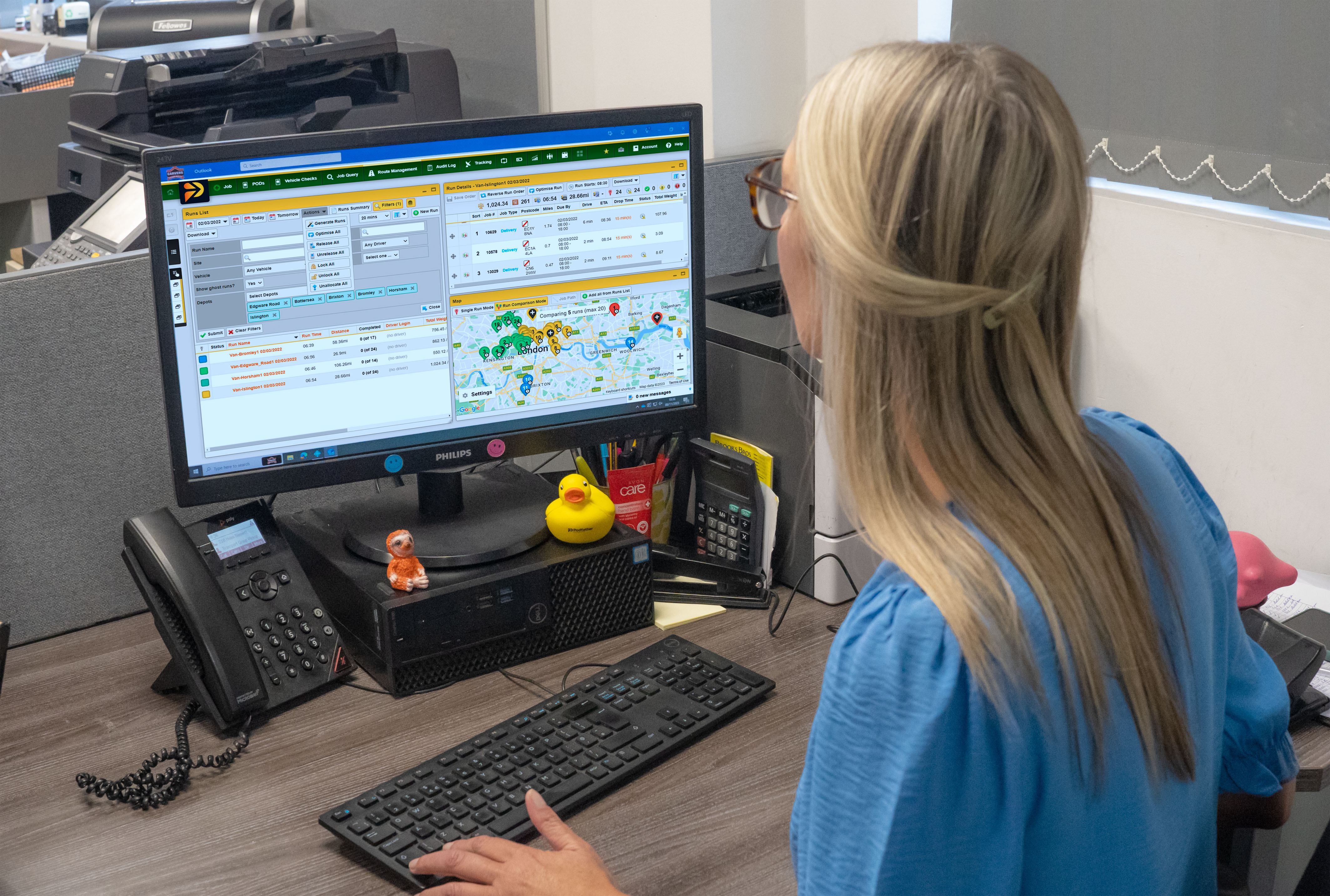The Business Case for Route Optimisation: Lower Mileage, Higher Profit

When you operate a logistics operation, every mile matters. For companies managing their own fleets, small inefficiencies in route planning can lead to big costs over time - fuel waste, driver overtime, missed deliveries, costly spot hires, and unhappy customers. That’s why route optimisation is no longer a “nice to have” – it’s a business-critical tool for cutting costs, improving service, and increasing profitability.
What Is Route Optimisation?
Route optimisation uses technology to calculate the most efficient way for vehicles to complete deliveries, collections, or service calls. Unlike basic route planning, which often relies on driver knowledge or manual mapping, route optimisation software factors in delivery windows, driving time, vehicle capacity, road restrictions, and more. It then builds optimised routes that reduce mileage, lower emissions, and increase delivery success rates.
Lower Mileage Means Lower Costs
Fuel is one of the largest ongoing expenses in logistics. With prices fluctuating and environmental pressures rising, reducing mileage is a top priority. Route optimisation significantly cuts unnecessary travel, often reducing overall mileage by 10–20% or more.
Fewer miles on the road also mean lower vehicle wear and tear, helping extend asset life and reduce maintenance costs. Plus, less time on the road means lower labour costs due to fewer hours worked and less reliance on agency drivers or overtime.
Improve Delivery Capacity Without Adding Vehicles
One of the key benefits of route optimisation is its ability to help you do more with the fleet you already have. By eliminating inefficiencies, you can increase the number of deliveries per route, sometimes by up to 25%, without needing more vehicles or drivers. For businesses under pressure to meet growing demand or expand into new areas, route optimisation makes scaling more achievable and affordable.
Drive Up Customer Satisfaction
With optimised routes, deliveries are more likely to arrive on time and within agreed windows. This reliability builds trust and reduces missed drops, customer complaints, and redelivery costs. When combined with real-time tracking and automated ETA notifications, it enhances the overall customer experience - something that is increasingly a differentiator in B2B and B2C logistics alike.
Unlock Data for Smarter Decision Making
Route optimisation tools don’t just plan routes, they provide valuable insights into fleet performance. You can identify bottlenecks, track driver behaviour, compare planned vs. actual routes, and spot opportunities for further improvement. These insights allow for better strategic planning, more accurate forecasting, and stronger operational control.
A Greener Way to Grow
With sustainability under the spotlight, many logistics businesses are under pressure to reduce their carbon footprint. Route optimisation plays a vital role here. By cutting mileage and improving fleet efficiency, you directly reduce fuel consumption and CO₂ emissions. This supports corporate sustainability goals and can help meet environmental compliance standards or customer expectations around green logistics.
Conclusion: Profit from Smarter Planning
For any business operating a fleet, the case for route optimisation is clear: lower mileage, better delivery performance, and higher profit margins. It’s not just about planning the fastest route - it’s about building a smarter, leaner, and more resilient operation.
Whether you're delivering building materials, food and drink, or managing complex construction logistics, route optimisation can drive meaningful results across your bottom line.
If you're ready to explore how route optimisation can benefit your business, get in touch with Podfather today. We help companies across the UK streamline their delivery operations and unlock long-term growth through smarter planning.


